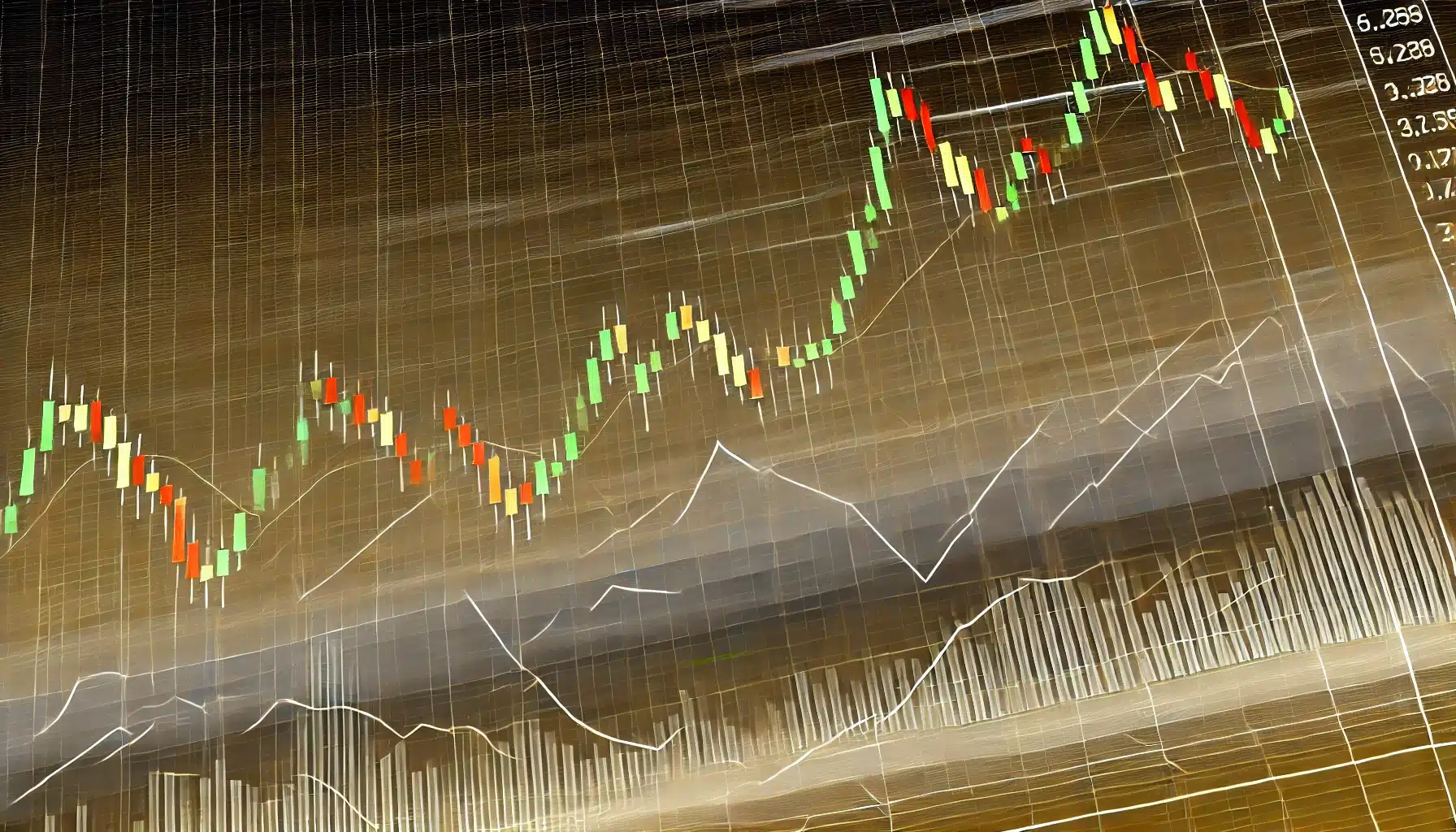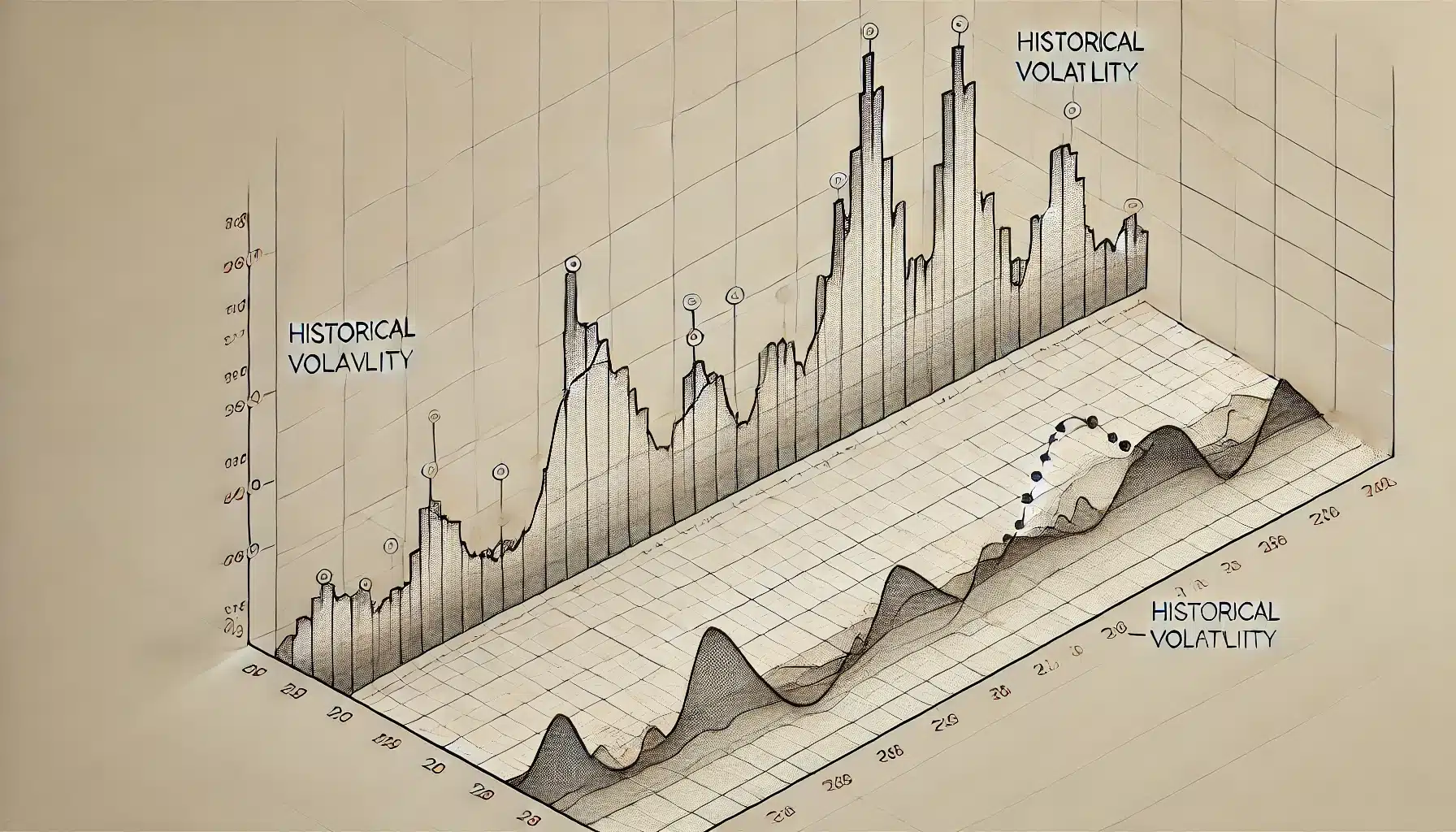The Ultimate Guide to Historical Volatility
The Ultimate Guide to Historical Volatility
Unveiling Market’s Past for Future Insights

In the ever-evolving realm of finance, where the tides of the market can turn in an instant, possessing insights into the past can often illuminate the path to future success. Historical volatility, a powerful metric deeply rooted in statistical analysis, offers traders and investors a lens into the price fluctuations of an asset over a specified period. In this comprehensive guide, we’ll unravel the complexities of historical volatility, exploring its calculation, interpretation, and practical applications in navigating the financial markets.
What is Historical Volatility (HV)?

Historical volatility, at its essence, quantifies the degree of price variability an asset has experienced in the past. It’s a statistical measure that captures the magnitude and frequency of an asset’s price swings, essentially reflecting how “wild” or “calm” the market has been. A high historical volatility suggests substantial price fluctuations, implying greater risk and potential reward, while low historical volatility signifies smoother price movements and a more stable environment.
Understanding historical volatility is crucial for traders and investors as it provides valuable insights into an asset’s risk profile and potential future price behavior. It allows for a more informed assessment of investment opportunities, aids in risk management, and plays a vital role in options pricing and other financial applications.
The Calculation of Historical Volatility
Historical volatility is typically calculated using the standard deviation of an asset’s logarithmic returns over a specific period. This calculation involves several key steps:
-
Gather historical price data: Collect the closing prices of the asset over the desired period (e.g., daily closing prices for the past 30 days). The choice of the lookback period depends on your investment horizon and the type of analysis you’re conducting.
-
Calculate logarithmic returns: For each price data point, calculate the natural logarithm of the current price divided by the previous price. This transformation helps normalize the data and account for compounding effects, making the returns more suitable for statistical analysis.
-
Calculate the mean return: Find the average of the logarithmic returns calculated in the previous step. This represents the average daily return over the lookback period.
-
Calculate the deviations: Subtract the mean return from each logarithmic return to get the deviations. This step measures how much each daily return deviates from the average.
-
Square the deviations: Square each deviation obtained in the previous step. This eliminates negative values and emphasizes larger deviations.
-
Calculate the variance: Sum up all the squared deviations and divide the result by the number of data points minus one. This gives you the variance, a measure of the dispersion of the logarithmic returns.
-
Calculate the standard deviation: Take the square root of the variance calculated in the previous step. This gives you the standard deviation of the logarithmic returns, which represents the historical volatility over the specified period.
-
Annualize the standard deviation: Multiply the standard deviation by the square root of the number of trading periods in a year (e.g., 252 for daily data) to obtain the annualized historical volatility. This step expresses the volatility in a standardized format, making it easier to compare across different assets and timeframes.
While the calculation may seem intricate, many financial software and platforms offer built-in tools to calculate historical volatility automatically, streamlining the process for traders and investors.
Interpreting Historical Volatility
Interpreting historical volatility requires context and understanding its implications. Here are key aspects to consider:
-
Magnitude: The magnitude of historical volatility indicates the intensity of past price swings. A higher value suggests greater volatility and potential for larger price movements, both upward and downward. This is crucial for assessing the risk associated with an investment.
-
Comparison: Comparing an asset’s current historical volatility to its historical average or to that of similar assets can reveal whether it’s currently experiencing unusually high or low volatility. This can help identify potential opportunities or risks.
-
Trend: Observing the trend of historical volatility over time can provide valuable insights. An increasing trend may signal growing uncertainty or market turbulence, while a decreasing trend suggests a calming market environment. This information can be useful for adjusting trading strategies and risk management.
-
Impact on Options: Historical volatility significantly influences options pricing. Higher volatility leads to higher option premiums, reflecting the increased potential for price movement and the associated risk. Option traders need to consider historical volatility when evaluating option prices and formulating trading strategies.
Applications of Historical Volatility
Historical volatility serves as a valuable tool in various financial applications, providing traders and investors with crucial insights to make informed decisions:
-
Risk Assessment: By understanding an asset’s historical volatility, investors can assess its risk profile and make more informed investment decisions. Higher volatility typically implies greater risk but also the potential for higher returns. This knowledge allows investors to align their investments with their risk tolerance and investment objectives.
-
Options Trading: Options traders rely heavily on historical volatility to estimate future price movements and price options accordingly. Implied volatility, derived from option prices, is often compared to historical volatility to identify potential mispricing’s and trading opportunities. This comparison can help traders identify options that are undervalued or overvalued based on their expectations of future volatility.
-
Portfolio Management: Portfolio managers use historical volatility to construct diversified portfolios that balance risk and return. By understanding the volatility characteristics of different assets, they can allocate capital efficiently and manage overall portfolio risk. This helps create a portfolio that is resilient to market fluctuations and aligned with the investor’s risk appetite.
-
Technical Analysis: Technical analysts use historical volatility to identify potential breakouts, support and resistance levels, and trend reversals. Volatility-based indicators, such as Bollinger Bands, rely on historical volatility to gauge market dynamics and generate trading signals. These indicators can help traders identify potential entry and exit points, as well as set stop-loss levels to manage risk.
-
Trading Strategies: Historical volatility can be integrated into various trading strategies, such as:
- Mean Reversion: Trading based on the assumption that prices tend to revert to their mean or average over time.
- Trend Following: Capitalizing on established trends by entering trades in the direction of the prevailing price movement.
- Breakout Trading: Identifying breakouts from established trading ranges or patterns, often accompanied by increased volatility.
- Volatility Arbitrage: Exploiting differences in implied and historical volatility to identify mispriced options.
Beyond the Basics: Advanced Concepts
For traders and investors seeking a deeper understanding of volatility, several advanced concepts warrant exploration:
-
GARCH Models: Generalized Autoregressive Conditional Heteroscedasticity (GARCH) models are statistical tools that forecast future volatility based on past volatility patterns. These models capture the tendency of volatility to cluster, where periods of high volatility are often followed by more high volatility, and vice versa. GARCH models can be valuable for risk management and options pricing.
-
Realized Volatility: Realized volatility measures the actual volatility of an asset over a specific period based on high-frequency intraday price data. This provides a more precise measure of volatility than traditional historical volatility, which relies solely on closing prices. Realized volatility can be particularly useful for short-term traders and those analyzing highly liquid markets.
-
Implied Volatility vs. Historical Volatility: Comparing implied volatility (derived from option prices) to historical volatility can reveal valuable insights into market sentiment and potential mispricing’s. If implied volatility is significantly higher than historical volatility, it may suggest that the market is overestimating future price swings, creating potential opportunities for selling options. Conversely, if implied volatility is lower than historical volatility, it may indicate that options are undervalued, presenting potential buying opportunities.
-
Volatility Term Structure: The volatility term structure refers to the relationship between the implied volatilities of options with different expiration dates. Analyzing the term structure can provide insights into market expectations of future volatility and help traders identify potential trading opportunities.
-
Volatility Index (VIX): The VIX, often referred to as the “fear index,” measures the implied volatility of S&P 500 index options. It’s a widely followed indicator of market sentiment and risk appetite. A rising VIX suggests increasing fear and uncertainty, while a declining VIX signals growing confidence.
Conclusion
Historical volatility is a powerful metric that unlocks insights into the past behavior of financial markets, providing traders and investors with valuable information for making informed decisions. By understanding its calculation, interpretation, and various applications, you can navigate the complexities of the financial world with greater confidence and clarity.
Remember, successful trading and investing require a multifaceted approach. Combine your understanding of historical volatility with other technical and fundamental analysis tools to develop a comprehensive strategy that aligns with your risk tolerance and investment goals.
Pro Tip: Always stay informed about market developments and economic news that can impact volatility. The financial landscape is ever-changing, and continuous learning is key to staying ahead of the curve.
Check out our articles on:
- Introduction to Options Trading
- Mastering Butterfly Spreads
- The Power of Diagonal Spreads
- The Power of Iron Condors
- The Power of Vertical Credit Spreads
Elevate Your Options Trading Skills
Ready to master trading options? Join our community for in-depth education on options trading, live trading sessions, and expert analysis of options trading strategies. Sign up today to start profiting from market swings using advanced options trading strategies!
Below are the links:
To your success,

Billy Ribeiro is a renowned name in the world of financial trading, particularly for his exceptional skills in options day trading and swing trading. His unique ability to interpret price action has catapulted him to global fame, earning him the recognition of being one of the finest price action readers worldwide. His deep comprehension of the nuances of the market, coupled with his unparalleled trading acumen, are widely regarded as second to none.
Connect with us:






